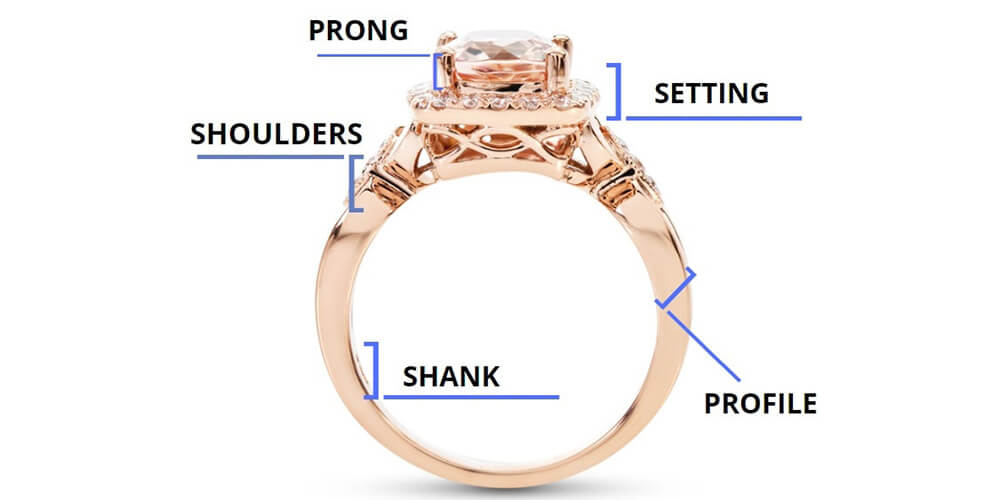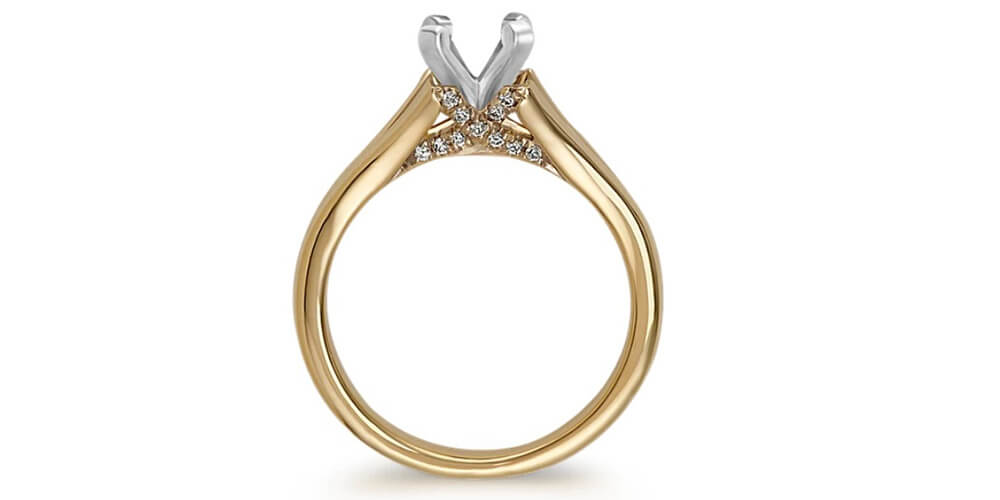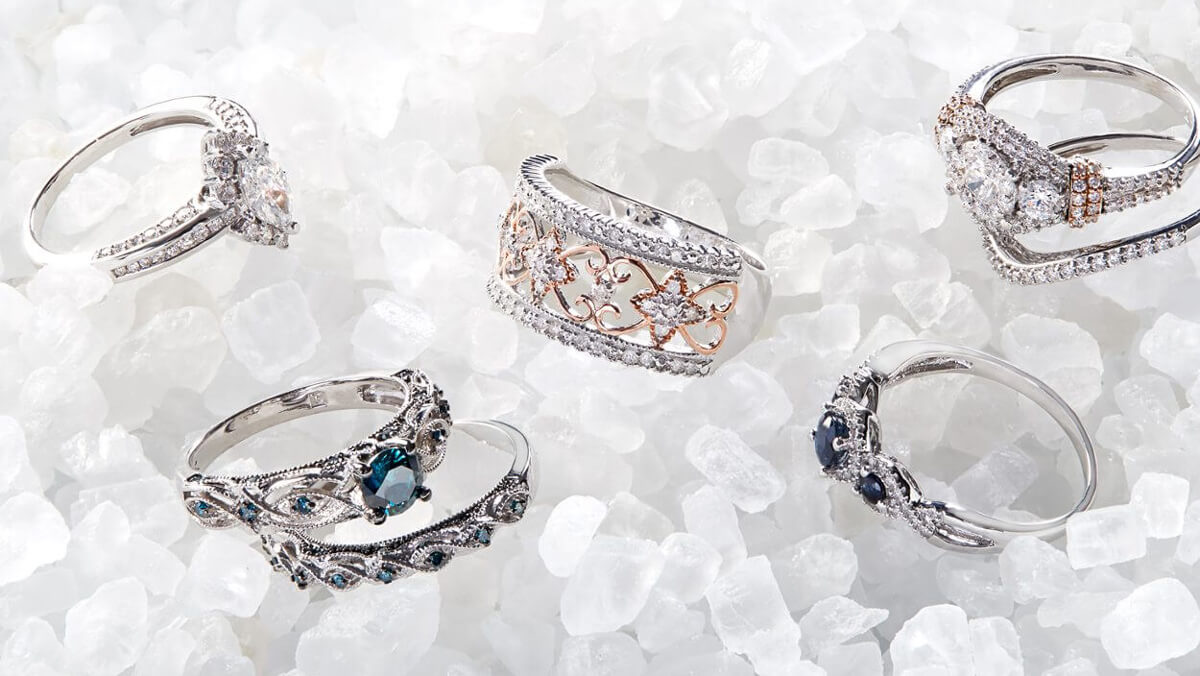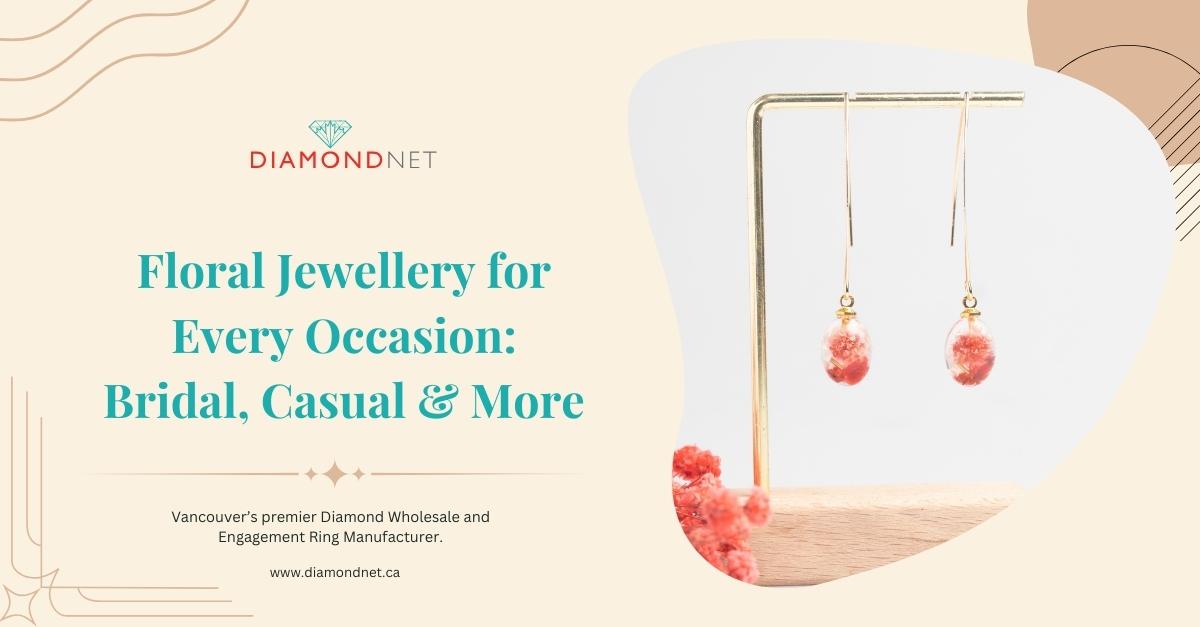Beginning your hunt for the oh-so-perfect engagement ring? One of the most important parts of choosing your ring will be deciding on the ring shank. The ring shank is the band of the ring, categorized by appearance. Continue reading to learn the different styles and considerations of ring shanks.
Terms to know about an engagement ring
- Head: where the stone sits—sometimes referred to as the setting.
- Prong: a specific type of stone setting with 4 or 6 prongs holding the gemstone in place.
- Shoulders: the shoulders of the ring support the head of the ring and refer to the section of the shank that leads up to the head.
When choosing the design of your engagement or wedding ring, you need to consider a few relevant factors. Individual style is a big one, but so is lifestyle, budget, and hand shape. The ring should not only look gorgeous—it should feel as though it was made for your finger.

Different parts of an engagement ring
Straight engagement ring shank
A straight ring shank is simple and classic. The band of the ring doesn’t taper off or split, and the edges of the shank are not rounded. They are formed with a rectangular strip resulting in flat edges all the way around the band. Rounded edges in the straight shank style is called a comfort fit, more easily fitting to the shape of your finger.
Tapered ring shank
A tapered band is true to its name. This style of band tapers off to a thinner section. The thinnest part will be where the stone is set or directly opposite from where the stone is set. Some tapered shank styles taper off to a thinner section on both sides of the stone, making the stone look larger and the band softer and more delicate.
Cathedral engagement ring shank
A cathedral ring shank frames the centre stone with two arches. It can appear as if the stone is being supported by the strength of the cathedrals, making the stone and the framework appear in sync and grandiose. Choosing a cathedral style band does not mean that the centre diamond has to be set up high. The bottom tip can be at the same level if it suits the wearer.
Split ring shank
A split ring shank is one of the more complex band designs. The band splits into separate pieces before it meets the gemstone at the top of the band. Split shank bands comprise two, three or four strands which are separated with space or interwoven. In many engagement rings, the shanks unite at the bottom of the ring, underneath the finger. Within this design, the width and prominence of these bands can differ depending on what you like.

Split ring shank
Bypass ring shank
With a bypass style, band ends do not meet the stone symmetrically. Both ends of the band wrap around the stone on opposite sides as if it’s bypassing it. It ends up appearing as though the band is softly wrapping around the centre stone. Note: rings with bypass shanks are right hand and left hand specific—not interchangeable.
Knife-edge ring shank
A knife edge shank a band with a sharp edge running along the outer edge of the shank. This ridge separates the ring band into two parts. The two slanted sides meet with a more prominent point than a traditional band—the effect is a petite finish. This can be a good band to choose if you’re hoping to make your centre diamond appear larger. Keep in mind, the pointier shape of the band could feel like something is digging into the sides of the next fingers.
Custom engagement ring shank
The reality is, you can be as creative as you want with your engagement ring shank. An openminded ring designer can help you put your own spin on a traditional looking ring, making it absolutely unique.
Whether you plan on creating your own ring shanks or selecting a pre-made design ready for stone setting, we have everything you need at DiamondNet.



